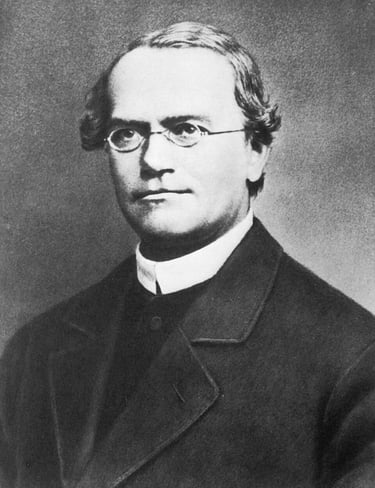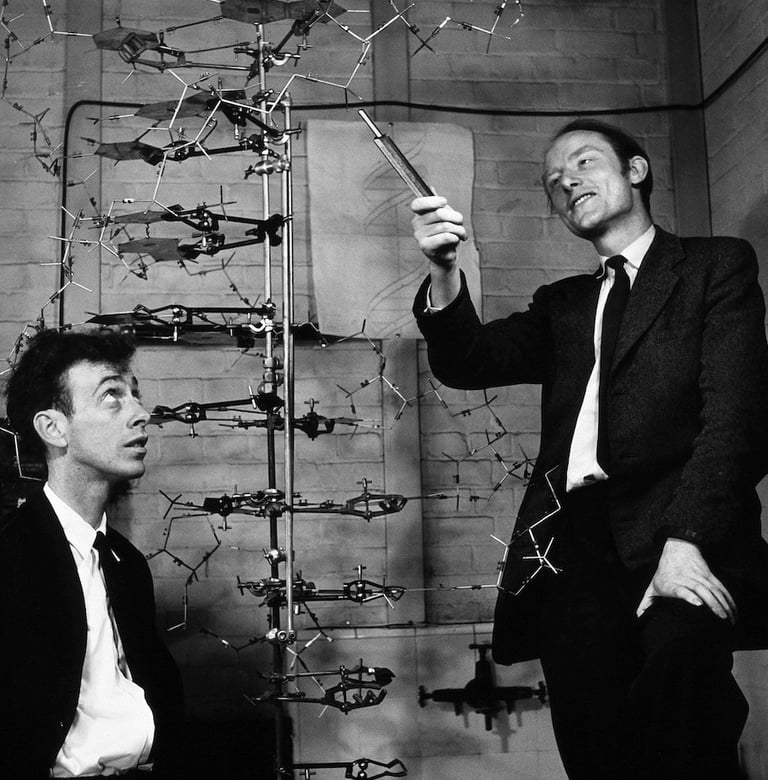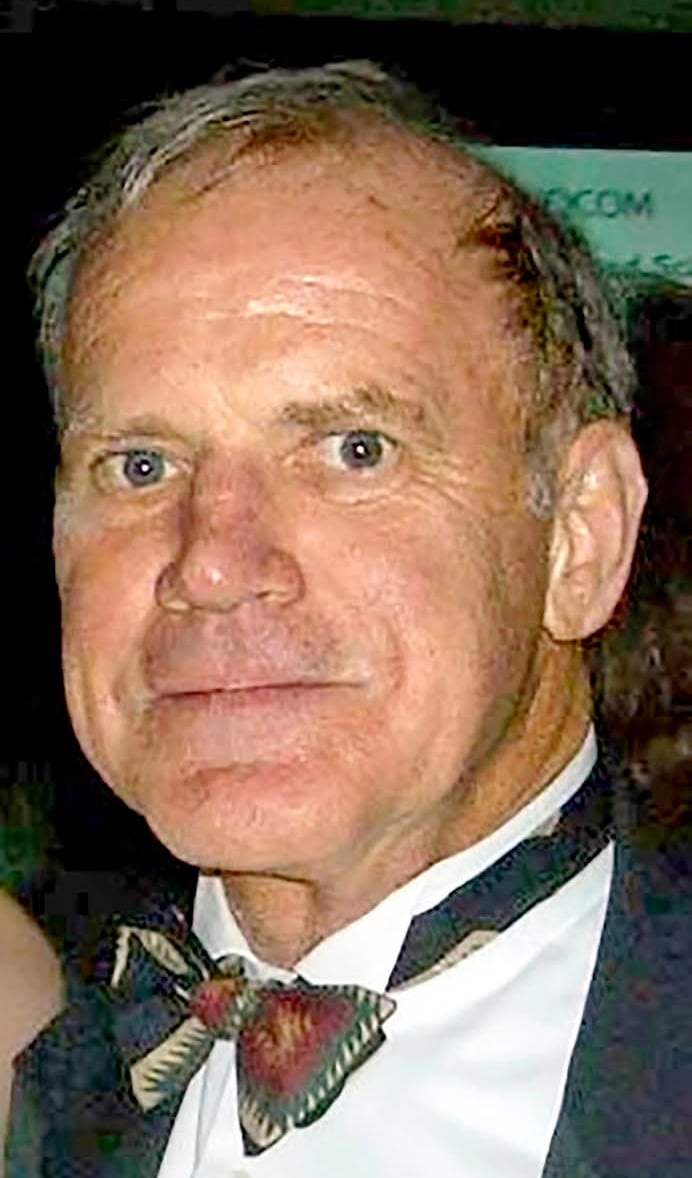From Epic Failures to Nobel Laureates: Scientists Who Defied All Odds
Discover how science legends like Mendel, Watson & Crick, and Barry Marshall started as failures and misfits before changing history.
HISTORYSCIENCE


Sometimes I get this feeling of disappointment looking at my university grades. They’re just not what they could have been. And in those moments, it’s hard not to start spiraling: Will I get into a Master’s program? Will anyone ever want to hire me with this GPA? Ah, if only I had prioritized hard work and studying over depression and existential crises! Thankfully, my „priorities“ have changed over the years, but my grades still sit there, staring at me...judgingly.
And then I think: OH GOD! Real scientistis probably came out of the womb publishing papers! Their brilliance was nothing but a straight upward line and I’ve already fallen off it!
But in reality, the history of science is full of absolute disasters. We like to think of scientists as these super rational geniuses. But when you actually read about their lives, you often find yourself asking “This guy? Really? This guy?! How did HE manage to discover THAT?” Like, really, the one who got kicked out of school, barely knew anything about his field, or made his discoveries while high out of his mind? Yeah. That’s him. And there are plenty like him.
So let me show you what I’m talking about and guide you through just a small sample of weirdos and idiots who somehow became some of the most revered scientists in history.
Gregor Mendel – the man who pead and gave us genetics


Watson and Crick were two idiots obsessed with a singular question in pursuit of scientific glory. In that sense they weren’t all that special, since that describes like 80% of science students today. On an unrelated note, did you know that 69% of all statistics are made up on the spot?
Back to Watson and Crick! They were determined to figure out the structure of DNA. This would no doubt prove to be an endeavor which would require an exceptional knowledge of chemistry, structural biology as well as methods and techniques never seen before. Naturally, these two, who knew little to nothing about any of that, decided to solve it using something that looked suspiciously like children’s toys.
So how did they do it? Well, they were rather skilled at borrowing other people’s work without asking too many questions, if you catch my drift. They had a lot of contact with two far more serious researchers, Maurice Wilkins and Rosalind Franklin, who were working on X-ray diffraction of DNA. Their data showed the molecule likely had two, three, or four strands - information Watson and Crick were very happy to receive (no stealing just yet). To figure out the structure of DNA, two important questions needed to be answered: How many strands did the molecule actually have? And how are the individual components assembled into its proper structure? Watson and Crick already knew that a single strand consists of a sugar-phosphate backbone with four bases (A, T, G, and C) attached. What they didn’t know was how those pieces fit together in three-dimensional space.
The first model they came up with had three chains, twisted around each other with the sugar-phosphate backbone in the center. Phosphates on the inside, bases on the outside. Remember when I said they didn’t really know chemistry? This violated its basic principles! You can’t just put phosphates together like that! Their negative charges would repel each other and cause the whole molecule to fall apart. But it gets worse. Their model left pretty much no space for water, despite the fact that DNA is famously a “wet” molecule. Watson and Crick however, were so proud of this chemical monstrosity, that they decided to show it to Wilkins and Franklin to see if it actually matched that annoying little thing called experimental data. When the model was finally revealed, Wilkins and Franklin were unamused. Their disappointment was immeasurable and their day was ruined. Franklin, in particular made it very clear just how stupid she thought it was.
Watson and Crick, as sad as they were about their failure, didn’t give up. They kept working hard on their model, but they were missing some very crucial information. And this, dear reader, is where the stealing begins. At some point, Wilkins casually mentioned to Watson that Rosalind Franklin had taken some new X-ray diffraction photographs of the fully hydrated form of DNA. One of them, labeled “Photograph 51”, was practically perfect. Not only did Wilkins tell Watson about it, but he flat-out showed the picture, you know, without Franklin’s knowledge or consent. Or so goes the common misconception. The photograph was actually taken by Raymond Gosling, Rosalind’s PhD student...still without anyone’s consent.
Watson took one look at it and immediately realized DNA had two strands. Wow! What a genius! All it took was someone else’s work and a total disregard for academic ethics! The next day, Watson and Crick started building their model from scratch, still somehow clinging to their braindead idea that phosphate must be on the inside and bases on the outside. Why?! Did they think Wilkins and Franklin just made those rules up? Were they allergic to understanding chemistry? We may never know. What we do know is that no matter how many times they tried, the laws of physics sadly refused to cooperate.
After some time, they finally had to admit that maybe the backbone went on the outside, and the bases faced each other on the inside. Maybe though. But this just created new problems: How exactly do the bases pair up? And how do they even fit in there? But do not fear, science theft is here! Franklin’s unpublished results, yet again, mysteriously made their way into Watson and Crick’s hands, conveniently solving the backbone dimensions issue. As for the how the bases face each other, that was just pure guesswork. And a correct one at that, somehow.
By early March 1953, Watson and Crick made their final model. On April 25, they published the now iconic “Molecular Structure of Nucleic Acids” paper in Nature. It was accompanied by a paper from Franklin presenting strong crystallographic evidence for the double helix. Wilkins added a third article reinforcing the model with more data from DNA crystals.
So yes, one of the most important discoveries in biology was built on a mix of overconfidence, arts and crafts, conveniently leaked data, and lucky guesses. A true Nobel worthy effort indeed.


Barry Marshall was kind of a smart guy. Worst he's ever done was purposely give himself a disease.
After finishing med school, he decided to specialize in internal medicine. During one of his research projects, he was introduced to pathologist Robin Warren, who had been observing some interesting bacteria in gastric biopsies. These would later be called Helicobacter pylori. Warren needed a clinician to track the patients these samples came from and follow their diagnoses over time. This was a perfect role for Marshall. Together, they managed to discover a pattern: every patient with an ulcer also had this bacteria in their stomach.
In 1983, Marshall presented these results at the Royal Australian College of Physicians meeting in Perth, Australia...and got properly laughed at. At the time, everyone was convinced the stomach was far too acidic for bacteria to survive. So, the idea that a germ was causing ulcers was like saying the earth is flat. The cause of gastritis was unknown, however cigarette smoking and stress were thought to be correlated with the disease. If Marshall wanted the medical community to believe him, he needed to present much stronger evidence than some statistics.
Unfortunately, the research proved incredibly difficult as they couldn’t get Helicobacter pylori to cause the symptoms in any of their animal models. They tried different approaches, different species (rats, mice, pigs), but nothing came out of it. No infections, no ulcers. Marshall was beginning to get quite frustrated and desperate. One day after yet another failed attempts to infect piglets, he decided to take matters into his own...stomach. Having undergone a baseline endoscopy to confirm his stomach was in good shape, he drank a solution containing H. pylori, expecting to develop an ulcer in a couple of years.
However, he didn’t need to wait that long at all. After just 5 days he already started experiencing bloating, diminished appetite, bad breath and vomiting. After 10 days, he went back to the same endoscopist and did a biopsy again. Marshall had bacteria all over the place. Fortunately, he was able to treat and cure himself with antibiotics, but the point has been made. H. pylori was clearly the pathogen responsible for peptic ulcers. There could be no other explanation. The results of the experiment were published in 1985 in the Medical Journal of Australia. Marshall kept working H. pylori research, and two decades later he got a Nobel Prize for it.
But he wasn’t the only scientist who’s ever done self-experimentation. An article published in 2012 found that over the past two centuries, around 465 physicians had experimented on themselves and about two-thirds of those cases were related to infectious diseases. Although self-experimentation is never recommended and has, in some cases, cost lives, the study shows that many of those experiments ended up being invaluable to the field of medicine and significantly advanced our understanding of disease.
Now, this really got me thinking because...what are we supposed to take away from this? Should we condone or discourage such behavior? Should we prioritize the advancement of science over individual lives? What do you think, dear reader? Personally, I feel like I’d be the first to put my life in danger for the advancement of science, yet I’d also advise everyone else not to do the same. Maybe that’s just me being a hypocrite.


Kary Mullis was a brilliant scientist and an absolute menace to everyone around him. He argued with colleagues, cheated on spouses, and casually synthesized and used psychedelic drugs.
These drugs were so powerful they handed him the manual to the universe. I’m not kidding! At the ripe old age of 22, Mullis decided the world deserved to know how the universe worked. So he sent a paper to Nature describing just that. And it got published. In Nature. You can look it up, it’s called “The Cosmological Significance of Time Reversal.” Honestly, I want whatever he was having.
Although he knew how to synthesize these mind-blowing drugs, he was ironically bad at biochemistry. Apparently, knowing how to do something doesn’t immediately make you good at memorizing and regurgitating information. Take that, professors, employers and the whole education system!
While managing a café owned by his first ex wife (yes, he had multiple, are you surprised?), he bumped into his old friend Tom White. White would later get Mullis a job at Cetus Corp and also save his ass multiple times during the course of their friendship. Through all the Kary’s chaos and overconfidence Tom just stayed undeterred by his side. Be a Tom. Get yourself a Tom. And if you do, hold onto them with everything you’ve got.
Back to Cetus Corp, the location of our main events. Despite knowing little about molecular biology, Mullis was hired to work on the production of oligonucleotides. Now of course, he did not doubt he was perfectly qualified, and neither did apparently Tom White, who got him the job. What did I say about Tom? Total MVP! And once White was promoted to director of molecular and biological research, he made his bro head of the DNA synthesis lab. And just to reiterate: Mullis didn’t have much knowledge of molecular biology and yet, he ended up revolutionizing it. In some cases all you need is overconfidence, curiosity and determination. Agian, take notes, professors, employers and the whole education system!
One of the main goals at Cetus was to develop a universal DNA test for detecting disease. They managed to find a way to isolate small DNA fragments and scan them for mutations, but the amounts of DNA were so small and the samples so full of random DNA garbage, that the results just weren’t reliable. Mullis wasn’t on that team (since he wasn’t really qualified), but in his mind he was qualified for everything and working on whatever he wanted in the moment. Really, who’s gonna stop him?
Mullis was driving through the redwoods of northern California, on his way to a romantic weekend with his girlfriend. Then the revelation hit him. If you stuck two short DNA fragments (primers) on opposite ends of a target sequence you could get polymerase to copy just that part. Then if you repeated the process over and over, each round would double the amount. Boom! Exponential amplification. Billions of copies of exactly the DNA you wanted and none of the junk you didn’t. He called it the polymerase chain reaction.
Mullis quickly pulled over and started writing his ideas on a piece of paper. The girlfriend was not thrilled, but she was still holding out hope for a cute, romantic getaway. Little did she know she just lost her man to those irresistible DNA curves. Their romantic weekend was as good as done. Mullis could not or would not shut up about PCR the whole time they were together. Honestly, understandable. I too have ruined a date or two by overexplaining primer design. But you know what? If they don't find PCR talk attractive, then they’re just not the one.
In 1986, Mullis quit his job at Cetus and left science to prusue surfing. That is, until the Nobel Committee called him up on October 13, 1993, to let him know he'd just won a Nobel prize.


Conclusion
So, don’t be discouraged by your grades, your age, your expertise – just don’t be discouraged, okay? Because if we’ve learned anything today, it’s that overconfidence is a superpower. So, make mistakes. Be weird. Be absolutely diabolically wrong in the pursuit of truth. Because with enough stubbornness, delusion, and sheer refusal to give up, you too, dear reader, might just stumble into a world-changing discovery.
Euralēthia
References:
Johann Mendel was a talentless peasant. Okay, that sounds unnecessarily harsh. I really have nothing against the guy, in fact I think he’s a legend. What I meant to say is: he was born a son of two peasant parents and didn’t show remarkable skill for anything in particular. Sound better? As such he did what any practical man in his position would do back in the day – used religion for his gain.
He wasn’t particularly spiritual, but he became a monk in Brno and with his entry into the monk-y business came a new name – Gregor (which is what we still call him today). Later on Greg bacame a priest too, and, goodness, was he terrible at it! He didn’t speak Czech, the language of his congregation, his sermons were incredibly dull, and he was too emotional to work with the poor. However, Mendel kept his practical and self-aware attitude. He realized the priesthood wasn’t gonna be it for him and decided to do something else instead. Like becoming a high school teacher of maths and science without any prior education.
„No problem“ thought Mendel, probably „I’m smart. I’ll just pass the exams, easy!“. Forget what I said about self awareness. He failed the written part, he failed the oral part. And he especially failed biology which was at the time mostly about taxonomy and nomanclature. Dude was skipping entire categories, inventing others, and just kind of winging it in hopes of a passing grade. Honestly, relatable. One examiner noted: “The candidate seems to know nothing about technical terminology, naming all animals in colloquial German, and avoiding systematic nomenclature”
But Mendel was determined. One awful humiliation wasn’t gonna stop him. He decided to actually get proper training this time so he went to Vienna to pursue a degree in the natural sciences. In 1856 it was time for him to retake his teaching exam. This time it was going to be different. This time he was going to pass it all! With his newly acquired knowledge and passion for sciences there was nothing that could possibly stand in his way of becoming a high school teacher! NOPE. The second exam was as disastrous as the first and Mendel finally gave up on his teaching dreams. But never on the pursuit of knowledge.
Back in Brno, he decided to do a couple pea experiments. Well, that might be an understatement. It was more like he experimented on over 28.000 pea plants, actually. Why peas? He wanted to study how traits were passed down, and peas were perfect for it. They had easily observable traits like flower color, seed shape etc. and they could self-pollinate or be cross-pollinated manually. So, while the other monks were spending their time praying, Mendel was out there helping flowers do the nasty. I guess you could say he guided plants to a treasure he couldn’t possess (being a monk and all). He would start by snipping off the anthers of each flower and then transferring pollen from one flower to another with his paintbrush. Father of genetics, indeed he was. Okay sorry, I’ll stop.
He focused on seven distinct traits, each with two contrasting forms, like tall vs. short plants or yellow vs. green seeds. First, he crossbred true-breeding (homozygous) plants. These are plants that, when self-pollinated, always produce offspring with the same trait, for example, a tall plant whose offspring are always tall. So, Mendel bred a true-breeding tall plant with a true-breeding short one. In the first generation of hybrids (F1 generation) all offspring showed only one of the traits, in this case – tall. Mendel called this trait dominant and the one that didn’t show (here, shortness) he called recessive. Then he cross-bread plants from F1.
The second generation (F2) showed a consistent 3:1 ratio of dominant to recessive traits. From this, Mendel concluded that traits are passed down as discrete "factors" (what we now call genes), with each organism inheriting one factor from each parent.
He formulated the following laws:
The Law of Segregation – each parent carries two copies of a “factor”, but only one is passed on to offspring.
The Law of Independent Assortment – factors for different traits are inherited independently of each other (discovered by studying two traits at once in dihybrid crosses).
In 1865 he finally presented his findings to a broader scientific community at the Natural Science Society in Brno. Paper included lots of tables and math which was too off putting to the scientists of the time. Math in biology? Ridiculous! Absurd, even! A sentiment which has persisted to this day among bio majors. Miraculously, Mendel’s paper ended up published in the Proceedings of the Brno Natural Science Society; although it was then politely ignored. To the scientists of the day, it read less like revolutionary study and more like nonsensical math gibberish from an amateur botanist.
No one understood the value of Mendel’s work, so he was gonna make them. He sent his paper to multiple researchers, hoping at least someone would get it. Only one replied: Carl von Nägeli. He was a pretty big deal in botany at the time, but he didn’t think any better of Mendel’s work than the rest did. He suggested Mendel try his experiments on hawkweed to see if his findings held up. Spoiler alert: they didn’t (Because hawkweed is weird, not because Mendel was wrong). Hawkweed could reproduce asexually aka. without pollen and eggs. It was virtually impossible to cross-pollinate and rarely generated hybrids. I don’t think a worse plant could have been chosen.
Meanwhile, around the same time Mendel was out there pleading with hawkweed, a certain Charles was trying to complete his theory of evolution. A theory missing one crucial piece: understanding of heredity. Darwin had a pretty big private library and in it sat a seemingly unremarkable book on plant hybrids. Right there, on page 52, was a very detailed summary of Mendel’s paper which would have solved everything. Darwin carefully looked through the book, writing plenty of notes on the margins. Some were on page 50, some on the page 51, 53 and 54. But for whatever reason he just skipped the page 52! Perhaps, in true biologist fashion, he took one look at the math and noped out of there. If Darwin had actually read it, the study would have given him the critical insight into his own theory and advanced our understanding of evolution by decades. Alas...
Back to Mendel though, he gave hawkweed a shot, he really did. For years he was struggling with it but never seemed to get anywhere. And so, he eventually gave up on further experiments and turned his focus to priestly duties. On January 6, 1884, he died a failure, of kidney failure and his work stayed irrelevant and forgotten for 16 more years.
Watson and Crick – discovering the structure of DNA with toys
Barry Marshall – drunk on bacteria
Kary Mullis – primers over partners and repeats over retreats
Like what you read?
Subscribe to the newsletter
Get updates on new posts, projects, and occasional thoughts and reflections! Basically, whatever's on my mind straight to your inbox.
